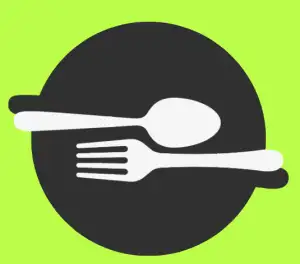Chives vs Scallions: Unveiling the Distinctive Flavors and Culinary Uses of these Onion Varieties

- Appearance and Structure: Understanding the Visual Characteristics of Chives and Scallions
- Flavor Profiles: Comparing the Taste and Aroma of Chives and Scallions
- Culinary Uses: Discovering the Versatility of Chives and Scallions in Cooking
- Nutritional Value: Analyzing the Health Benefits and Nutrient Content of Chives and Scallions
- Growing and Harvesting: Tips for Cultivating Chives and Scallions in Your Own Garden
- Storage and Shelf Life: Best Practices for Preserving the Freshness of Chives and Scallions
Chives and scallions are two popular onion varieties that add flavor and depth to a wide range of dishes. While they may appear similar, there are distinct differences between these herbs that make them unique in their own right. In this article, we will delve into the characteristics, flavors, culinary uses, nutritional value, growing and harvesting tips, as well as storage methods for chives and scallions. By understanding these differences, you can elevate your culinary skills and make informed choices when using these versatile ingredients in your cooking adventures.
Appearance and Structure: Understanding the Visual Characteristics of Chives and Scallions
Chives and scallions may belong to the same family, but they have distinct visual characteristics. Chives are thin, grass-like herbs with long, hollow green stems that resemble miniature blades of grass. They grow in clumps and can reach a height of 12 to 24 inches. On the other hand, scallions have a more robust appearance with thicker stems and larger bulbs at the base. The stems are white at the bottom and gradually transition into vibrant green leaves towards the top. Both chives and scallions have a fresh and vibrant appearance that adds an appealing touch to any dish.
Flavor Profiles: Comparing the Taste and Aroma of Chives and Scallions
Chives and scallions may both belong to the onion family, but they have distinct flavor profiles that set them apart. Chives offer a delicate, mild onion taste with a hint of garlic. Their flavor is subtle yet refreshing, making them perfect for adding a gentle onion note to dishes without overpowering other ingredients.
On the other hand, scallions have a stronger, more pungent flavor compared to chives. They provide a sharper onion taste with a slightly peppery undertone. Scallions also possess a milder sweetness than regular onions, making them versatile for various culinary creations.
In terms of aroma, chives emit a pleasant and subtle onion fragrance when chopped or crushed. The scent is not overpowering and adds a delightful freshness to any dish. Scallions, on the other hand, release a stronger aroma that is reminiscent of onions but with a distinct grassy note.
When deciding between chives and scallions in your cooking endeavors, consider the desired intensity of onion flavor you wish to achieve. Whether you prefer the delicate touch of chives or the bolder punch of scallions will depend on your personal taste preferences and the specific dish you are preparing.
Culinary Uses: Discovering the Versatility of Chives and Scallions in Cooking
Both chives and scallions are incredibly versatile ingredients that can enhance the flavor of a wide range of dishes. Chives, with their delicate onion-like taste, are often used as a garnish or added to salads, soups, and creamy sauces. They can also be sprinkled over baked potatoes or mixed into omelets for an extra burst of flavor.
Scallions, on the other hand, have a milder taste compared to chives. They can be used in stir-fries, sautés, and Asian-inspired dishes such as noodles and fried rice. The green tops of scallions are particularly popular for adding freshness to dishes like guacamole or salsa.
Both chives and scallions can be used interchangeably in many recipes. However, it's important to note that chives are best when added towards the end of cooking to preserve their delicate flavor, while scallions can withstand longer cooking times without losing their taste.
Whether you choose to use chives or scallions in your culinary creations, both will undoubtedly add a delightful touch of onion flavor that will elevate your dishes to new heights.
Nutritional Value: Analyzing the Health Benefits and Nutrient Content of Chives and Scallions
Chives and scallions not only add flavor to your dishes but also provide numerous health benefits. Both varieties are low in calories and fat, making them a great choice for those watching their weight. They are also rich in vitamins A, C, and K, which support immune function and promote healthy skin. Chives contain a compound called allicin, known for its antibacterial properties. Scallions, on the other hand, are a good source of fiber, which aids digestion. Incorporating these onion varieties into your meals can boost your overall nutrient intake and contribute to a balanced diet.
Growing and Harvesting: Tips for Cultivating Chives and Scallions in Your Own Garden
Both chives and scallions are relatively easy to grow in your own garden. Here are some tips to help you cultivate these flavorful onion varieties:
1. Planting: Start by selecting a sunny spot in your garden with well-drained soil. Chives can be grown from seeds or transplants, while scallions are usually grown from sets or transplants.
2. Soil Preparation: Before planting, amend the soil with compost or organic matter to improve its fertility and drainage. This will provide the necessary nutrients for healthy growth.
3. Spacing: When planting chives, space them about 6 inches apart, as they tend to spread quickly. For scallions, plant them about 2 inches apart to allow them room to grow.
4. Watering: Both chives and scallions require regular watering to keep the soil moist but not waterlogged. Water deeply once a week, especially during dry spells.
5. Fertilization: Apply a balanced fertilizer once every four to six weeks during the growing season to promote healthy growth and enhance flavor.
6. Harvesting Chives: Chives can be harvested once they reach a height of 6-8 inches. Simply snip off the leaves close to the base using scissors or shears. Avoid cutting more than one-third of the plant at a time to ensure regrowth.
7. Harvesting Scallions: Scallions can be harvested when they reach a diameter of around ½ inch and have green tops that are about 8-10 inches long. Gently pull them out of the ground or use a knife if necessary.
By following these simple tips, you can enjoy an abundant supply of fresh chives and scallions right from your own garden throughout the growing season!
Storage and Shelf Life: Best Practices for Preserving the Freshness of Chives and Scallions
When it comes to preserving the freshness of chives and scallions, proper storage is key. Both herbs are delicate and can easily wilt or spoil if not stored correctly. To keep chives and scallions fresh, start by trimming any wilted or discolored parts before storing them. Next, wrap the herbs loosely in a damp paper towel and place them in a plastic bag or airtight container. Store them in the refrigerator's crisper drawer, where they will stay fresh for up to one week. Avoid washing the herbs before storing as moisture can cause them to deteriorate quickly. By following these best practices, you can ensure that your chives and scallions retain their vibrant flavors and textures for longer periods of time.
In conclusion, understanding the differences between chives and scallions can greatly enhance your culinary adventures. Chives offer a delicate onion flavor with a hint of garlic, making them perfect for garnishing dishes or adding a subtle touch to salads and soups. Scallions, on the other hand, provide a stronger onion flavor that can withstand cooking, making them ideal for stir-fries and sautés. Ultimately, the choice between chives and scallions depends on the specific dish you are preparing and the flavor profile you desire. So go ahead, experiment with both and unlock the secrets of these versatile onion varieties in your own kitchen!
Published: 08. 12. 2023
Category: Food



